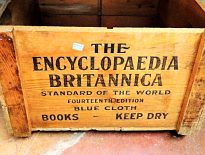Gary Bielfeldt – T-Bonds in Peoria

Today’s post is a profile of Guru investor Gary Bielfeldt, who appears in Jack Schwager’s book Market Wizards. His chapter is called “Yes, they do trade T-bonds in Peoria”.
This article is part of our ‘Guru’ series – investor profiles of those who have succeeded in the markets, with takeaways for the private investor in the UK.
You can find the rest of the series here.
Gary Bielfeldt
Gary Bielfeldt (( I couldn’t find a photo )) runs BLH, a big player in futures, especially in T-bonds.
- He runs BLH out of his home town of Peoria in Illinois.
- Bielfeldt has established a foundation from his profits to fund projects in Peoria.
Over in the states, “Will it play in Peoria?” is a figure of speech. (( The phrase comes from an 1890 novel by Horatio Alger called Five Hundred Dollars, about a group of actors putting on a play in Peoria ))
- Peoria is held to be typical of mainstream (but also dull, banal and provincial) American opinion. (( I live in Clapham which has the same connotations of everyman – “the man on the Clapham omnibus” without the provincial patronage ))
So it’s a strange place for a large bond trader to be based.
- But then Buffet is in Omaha.
Bielfeldt appear in Jack Schwager’s book Market Wizards.
- His chapter is called “Yes, they do trade T-bonds in Peoria”.
Early days
Bielfeldt began trading in the 1960s with $1,000.
- He started by trading corn futures, a small market at the time.
- He also ran a small brokerage office as a day job.
Mostly he traded soybean and related grains.
- By 1965 he had $10K, and he thought that soybean prices would go higher.
He bought twenty contracts, such that even a 10c decline would have wiped out his account.
- Prices did move lower at first, but in the end he doubled his account on that one trade.
T-bonds
By the early 1980s, his trading size was such that position limits in the grain markets were holding him back.
- After a bad soybean trade, he switched to T-bonds, which had no limits at the time, then later a much larger limit.
This was a major bottom in the market.
- He built up a huge long position and made enormous profits from 1984 to 1986.
Trading style
Bielfeldt doesn’t believe in diversification.
- He thinks that you should pick one area and become an expert.
Bielfeldt says that he wanted to use fundamental analysis, but he found it very difficult to know all the fundamentals.
- So he developed his own trend-following system, which he uses largely to tell him when to get out of positions.
The best thing anyone can do when starting out is to learn how a trend system works. It will teach a new trader to let profits run and cut losses short.
He doesn’t believe in the trading systems sold to the public.
They generally made too many trades, so the transaction costs will be too high.
Bielfeldt thinks that new traders should trade half their money from a system and half from their own judgement.
- As their confidence grows they will move away from the system, as he has.
He also thinks that systems don’t work so well as more people use them.
The five main factors he uses in evaluating the bond market are:
- the economy (he didn’t specify the indicators he uses)
- inflation expectations
- the dollar (exchange rate)
- the trade balance
- the budget deficit
He describes five traits of successful traders:
- discipline
- patience
- courage to go into the market (and to be contrarian)
- willingness to take losses
- strong desire to win
Poker
Bielfeldt likes to apply poker strategy to trading.
You don’t just play every hand and stay through every card. You should play the good hands, and drop out of the poor hands.
When you feel the percentages are skewed in your favor–you raise and play that hand to the hilt.
This reminds me of Buffett’s quote about using a bucket rather than a thimble when it is raining gold.
Wait for the right trade, just like you wait for the percentage hand in poker.
Quotes
The most important thing is to have a method for staying with your winners and getting rid of your losers.
You need to develop a plan. Don’t get swayed by every news item. Have a long-term objective.
Use a protective stop that you move as the position goes your way.
If a trade loses, you must handle it without any problem and come back to do the next trade. You can’t let a losing trade get to you emotionally.
When you are starting out, it is very important not to get too far behind because it is very difficult to fight back. Most traders have a tendency to take risks that are too large at the beginning.
Conclusions
This is probably the shortest chapter in Schwager’s book, and there’s not much for the private investor to get excited about.
- Bielfeldt has a concentrated style and takes on too much undiversified risk to recommend his approach to the average investor.
His trading advice, whilst good (cut your losses, run your winners, use stops, ignore the news, don’t over-trade) is fairly basic.
He strikes me as a trader who had one big stroke of luck (switching to T-bonds just as the market turned) which catapulted him into the big league.
- This is consistent with his later inability to maintain his outperformance (Google his name for more details).
That – coupled with his cute “sticking with my home town” story – lead to the Schwager interview.
Until next time.

















